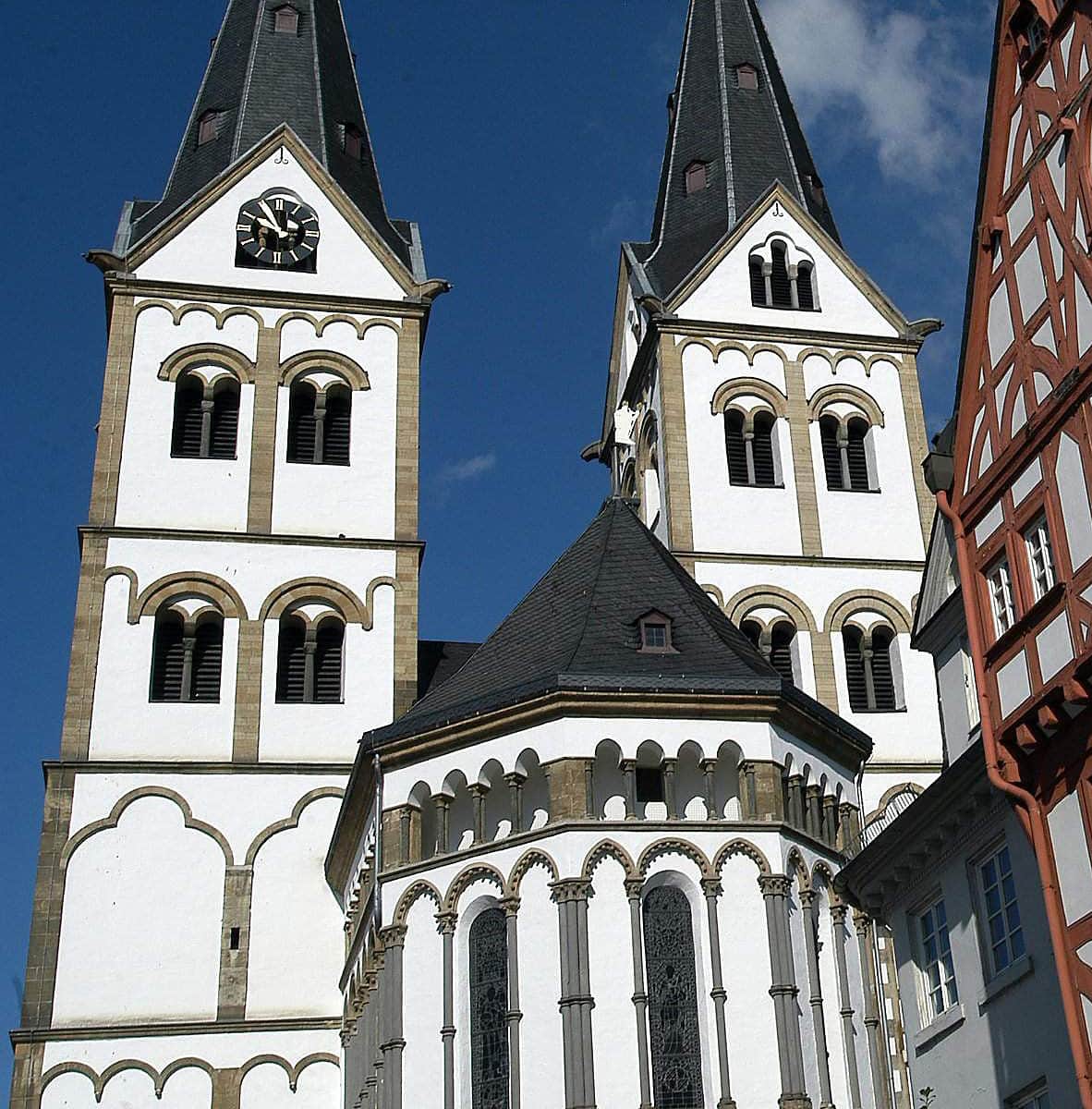St. Severus Church in Boppard, Germany is is known for its well-preserved 11th-century architecture, including its round arches, thick walls, and barrel vaults.
Romanesque architecture is a unique style of church architecture that was prevalent in Europe from the 9th to the 12th centuries. It is characterized by thick walls, sturdy pillars, rounded arches, and barrel or groin vaults. Romanesque churches often have semi-circular apses, and their facades are usually simple and functional, with limited decorative elements. The style is called “Romanesque” because it draws inspiration from ancient Roman architecture.
St. Severus church located on Marktplatz (market square) in the heart of the charming town of Boppard is an important example of the Romanesque style in the Rhineland region of Germany.
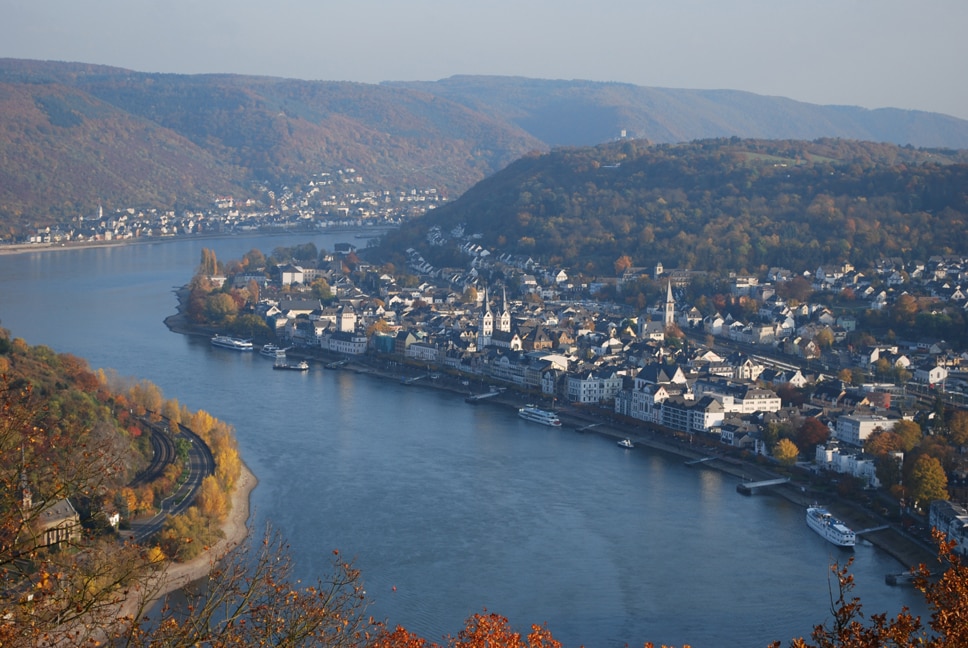

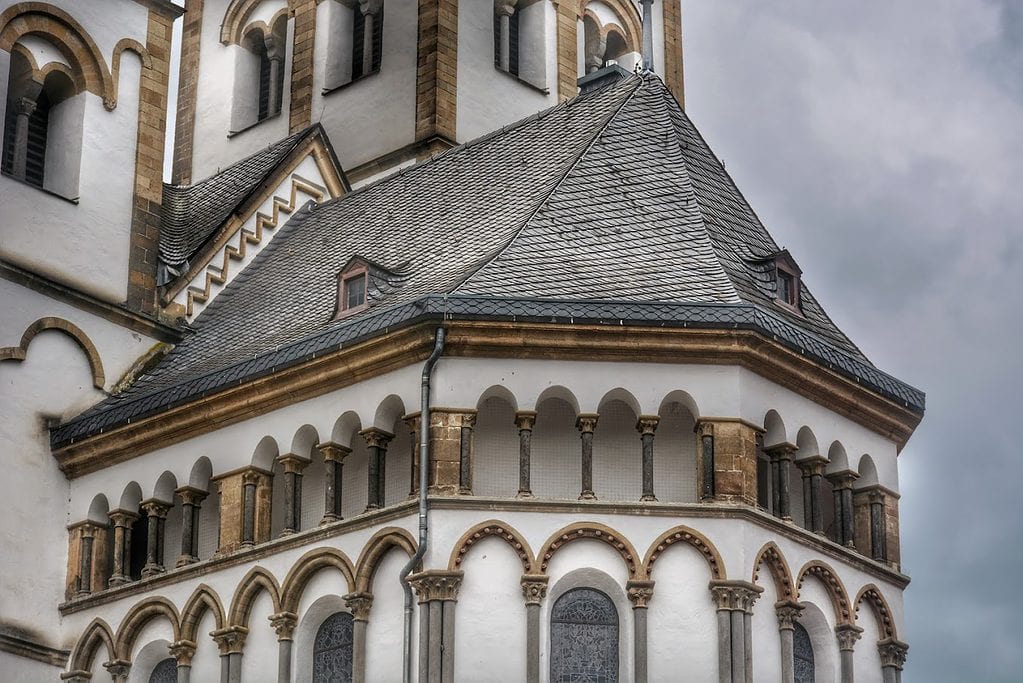
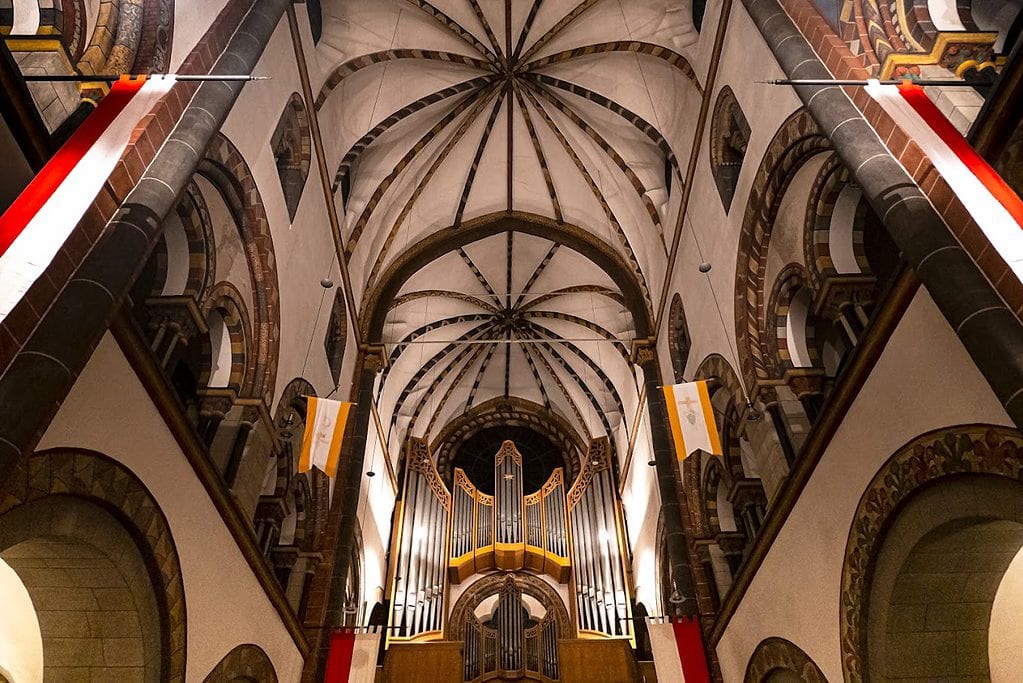
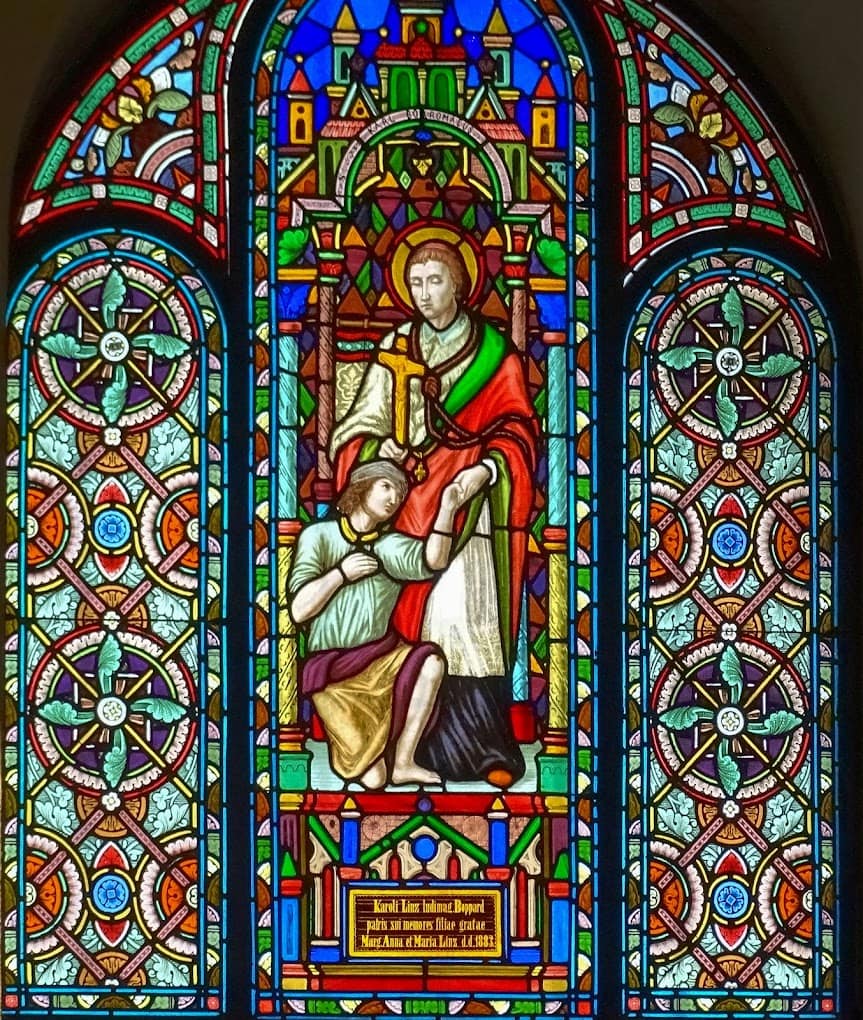
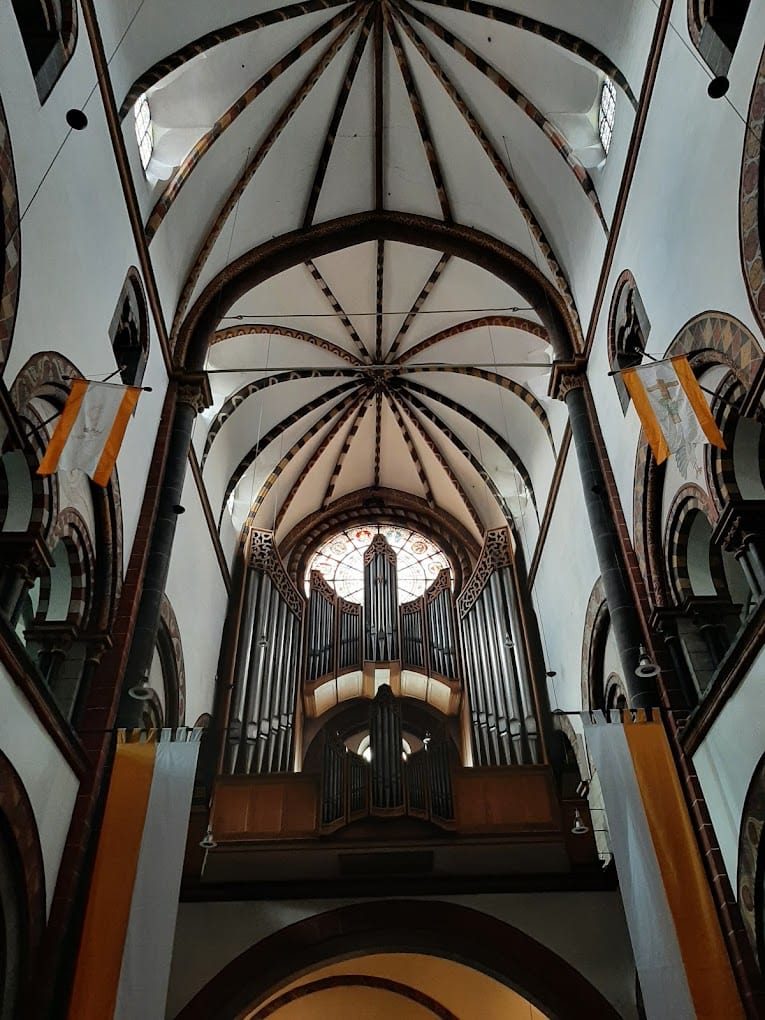
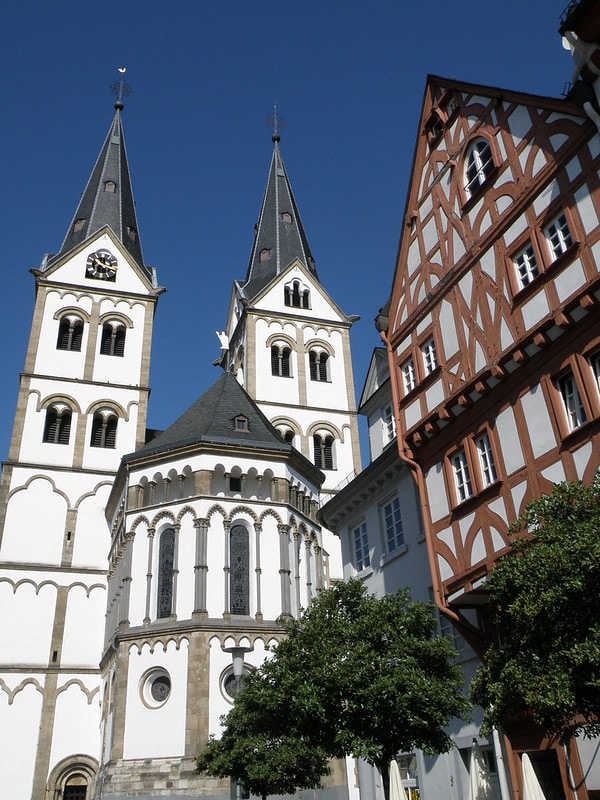
Inspired by Ancient Roman Architecture
With so many architectural styles, especially for churches, cathedrals and basilicas, here’s some additional Romanesque criteria.
- Massiveness: Romanesque churches were designed to be sturdy and massive structures. They were typically built from large blocks of stone, which gave the buildings their characteristic heaviness and solidity.
- Vaulting: Vaulting was a key feature of Romanesque architecture. Barrel vaults (cylindrical vaults) and groin vaults (vaults that are created by intersecting two barrel vaults) were used to cover the nave, aisles, and apse of Romanesque churches.
- Round Arches: Round arches were a defining feature of Romanesque architecture. They were used to support the weight of the vaults and to define the entranceways, windows, and arcades.
- Decorative Sculpture: While Romanesque facades were often simple and functional, the interiors of Romanesque churches were often richly decorated with sculptural elements. Columns, capitals, and friezes were adorned with carved figures, animals, and abstract designs.
- Fortified Churches: Many Romanesque churches were built in remote or insecure locations and were designed to serve as fortresses as well as places of worship. They were often surrounded by walls or towers and had few, narrow windows to make them defensible.
Like this architectural style?
There are many magnificent Romanesque cathedrals across Europe, here’s a list of ten you may already or that should be on your bucket list to visit.
10 very well-known Romanesque Cathedrals in Europe
- Santiago de Compostela Cathedral, Spain
- Cluny Abbey, France
- Speyer Cathedral, Germany
- Durham Cathedral, England
- Saint Sernin Basilica, France
- Monreale Cathedral, Italy
- San Miniato al Monte, Italy
- Pisa Cathedral, Italy
- Modena Cathedral, Italy
- Vézelay Abbey, France
While all these cathedrals, churches and basilicas are absolutely worth a visit when in town, we highly recommend checking the local events listing as a magical place like these or many other Romanesque sacred buildings are best experienced during a concert.

